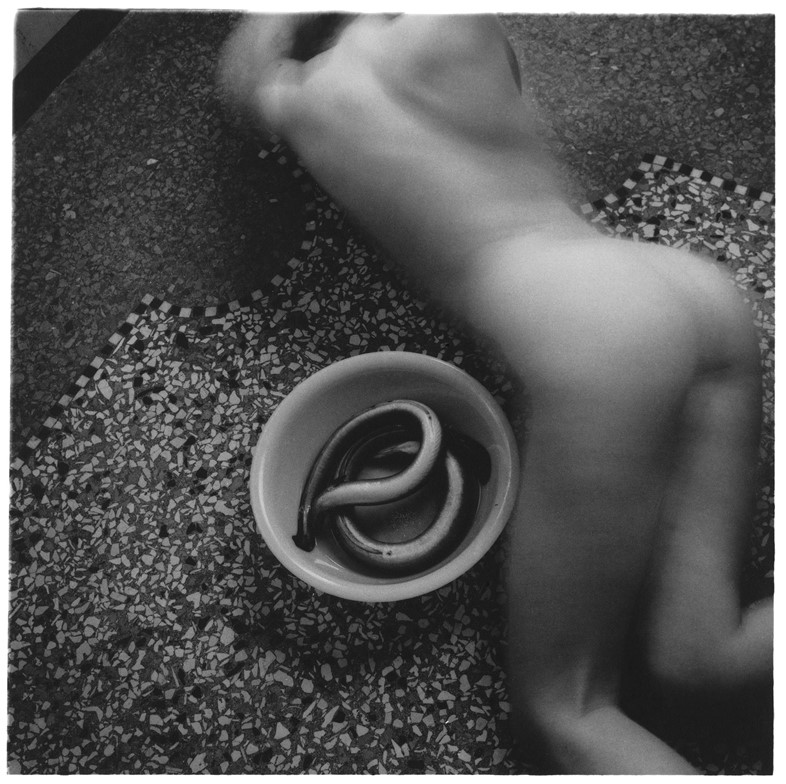As White Cube launches a new survey of Surrealism’s greatest female artists, Holly Black selects the most evocative works on show
Surrealism has long been occupied with the idea of the female body, using it as a symbol for erotic desire or the inner workings of the unconscious mind. Too often these images employ the male gaze, fetishising the woman and subjecting her to someone else’s vision. In a new exhibition at London’s White Cube entitled Dreamers Awake, the surrealist legacy is repositioned, presenting the often-overlooked works created by original members, such as Leonora Carrington and Dorothea Tanning, as well as tracing the movement’s visible influences in the ensuing decades. Here are some of the finest examples on show, from punk collage to erotic watercolours.
1. Francesca Woodman, From Eel Series, 1978
Despite her tragic suicide at the age of 22, Woodman created an enormous body of work that pushed the realms of experimental photography. Her self-portraiture is often centred on displacement, with blurred movement, confounding reflections and dilapidated rooms conveying her own sense of unease and detachment. This image is particularly unsettling, as her spectral body curves around a coiled snake, as if she is embracing the essence of sin.
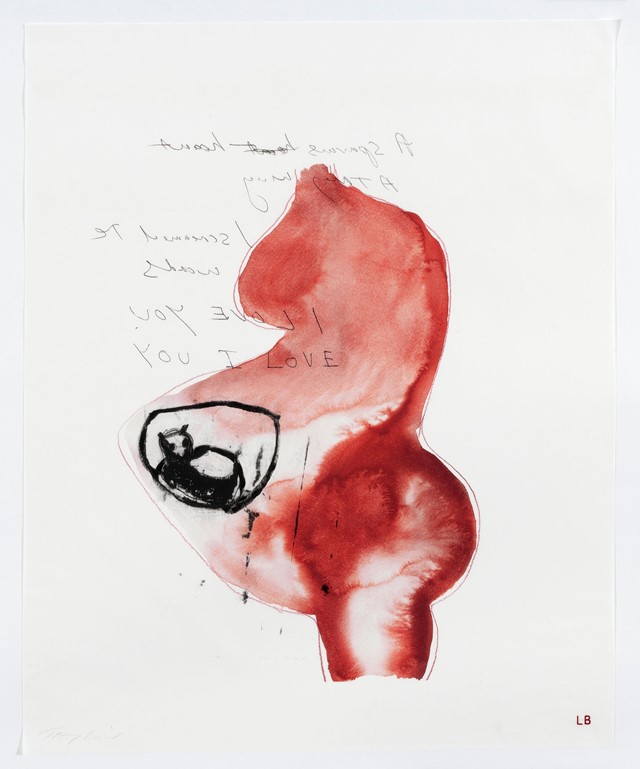
2. Louise Bourgeois and Tracey Emin, A Sparrow’s Heart, 2009-10
It took over a year for Emin to begin working on the series of watercolours that Bourgeois had given to her. The enormity of the gift – from one of the world’s greatest artists – was immobilising, and she was unsure of how she should go about doctoring these bleeding, watery images of phalluses and pregnant bellies. The result is a stunning dialogue between raw, sexual desire and inner emotional turmoil. Emin’s hard, scratchy lines inhabit these figures, surrounding their presence with a context of love, heartache and a dose of sadistic humour. One can easily see the relationship between this series and the surrealist game ‘exquisite corpse’ where multiple participants created collaborative images.
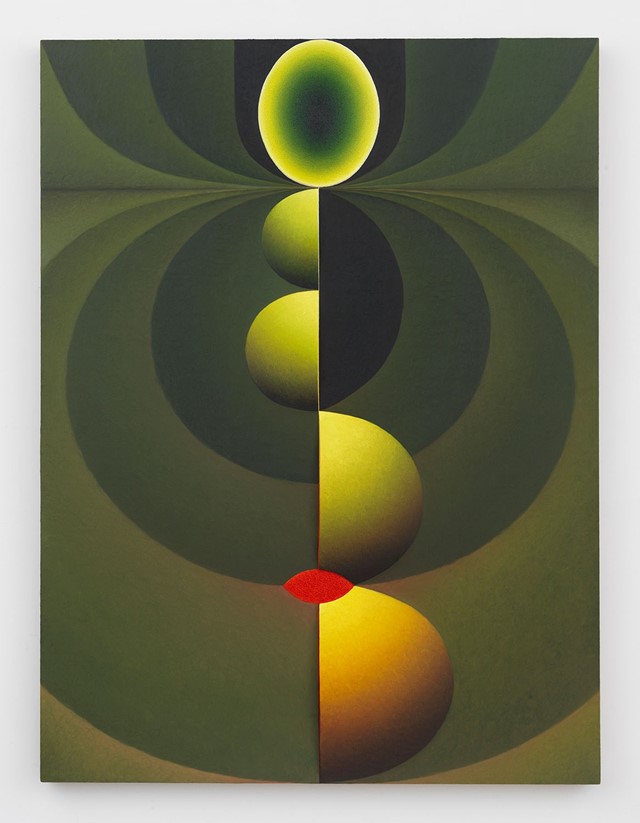
3. Loie Hollowell, Full Frontal (in green) 2016
Hollowell’s joyous paintings call the early works of Judy Chicago to mind, as well Georgia O’Keeffe’s pastel palettes. Therefore it comes as no surprise to learn that she often takes the abstracted female form as her subject, infusing it with a fascination with sacred geometry. By introducing texture, paintings such as Full Frontal take on a sculptural quality, recalling both religious iconography and psychedelic motifs, which appear to be manifested from a series of individual parts operating as a cohesive whole.
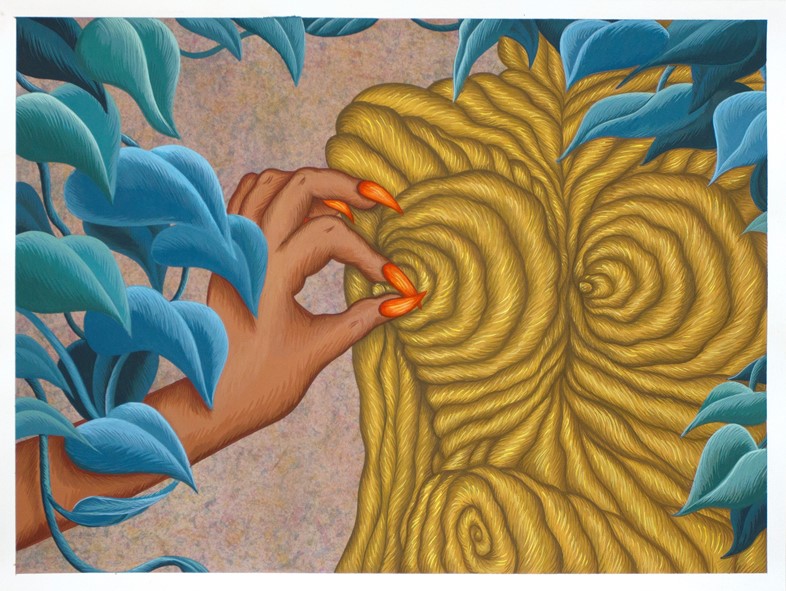
4. Julie Curtiss, The Test, 2016
Using a paint box of hyperreal colour, Curtiss’ studies of the female form create incredible textures that fight between flat planes of colour and a strange technique that mimics twisted ropes of hair or gnarled tree trunks. In this work a terrifying manicured hand reaches out from the foliage to tweak an anonymous nipple. The association with nature is one that recalls surrealist worlds, while the pinching alludes to historical precedents that used this action as a symbol of fertility or promiscuity.
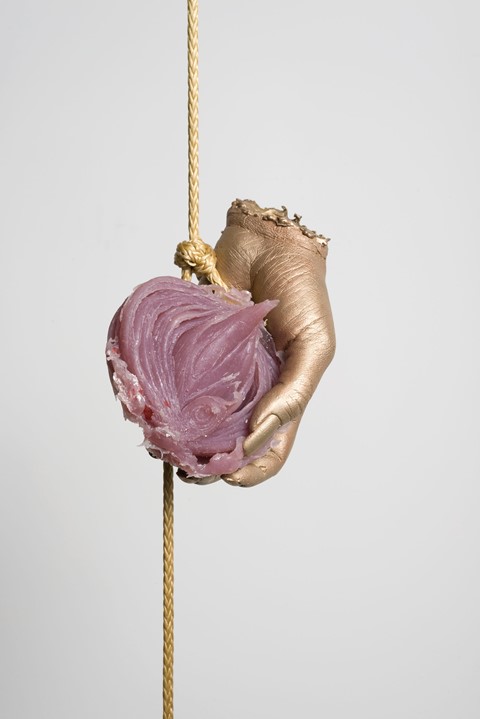
5. Kelly Akashi, Well(-)Hung, 2017
The hands are often the creators of art, but in Akashi’s sculpture they become the subject. Her installation scales the height of the gallery, supporting the weight of excruciatingly life-like hands (aside from the metallic colour) that claw their way along the taught rope and occasionally grasp at wax replicas of an onion. These dismembered body parts are a far cry from the soft, passive incarnations found in traditional sculpture. Akashi includes broken fingernails and lined palms that allude to the physical act of labour, as well as the mythical gestures of witches and ‘fallen’ women.
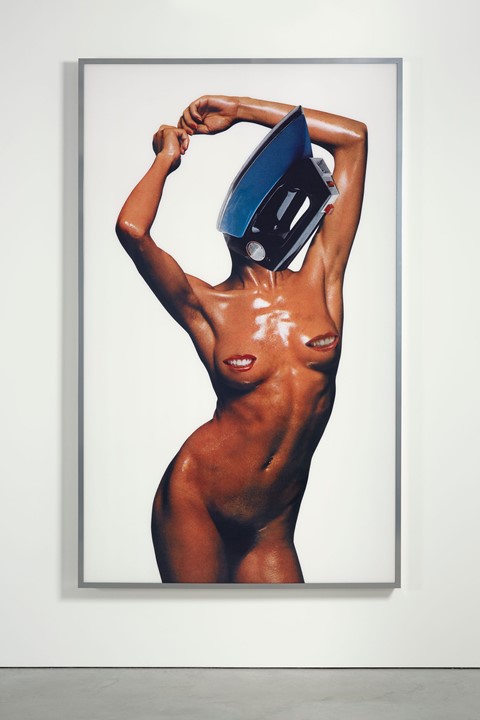
6. Linder, It’s the Buzz, Cock!, 2015
As an icon of punk collage Linder pulls apart mass media representations of women, creating montages that combine pornography with ‘feminised’ objects such as flowers and household items. Her most enduring image was used on the cover of The Buzzcock’s single Orgasm Addict, although this version is presented in full, saturated colour. The addition of a powerful light box presents the lithe, naked body in all its glistening glory, while the grinning smiles censoring the nipples are punctuated with bright red lipstick.
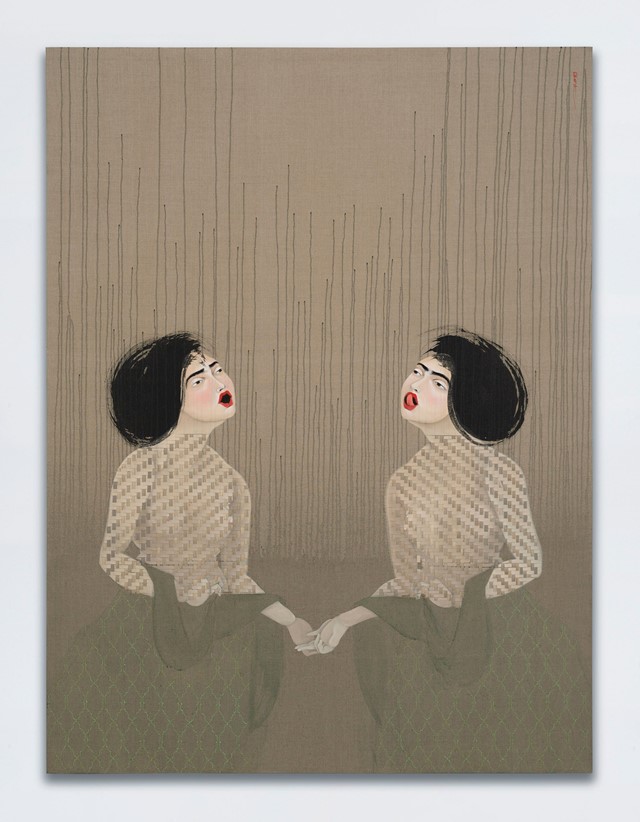
7. Hayv Kahraman, T25 and T26, 2017
Kahraman interrogates her experience as an Iraqi refugee and American émigré. The numerous women she depicts often represent different aspects of her inner self. These figures are painted with dark, brooding features and thick, ebony hair that appear to have been created with a single, sweeping brushstroke. In this work two figures clasps hands tightly, looking up to the sky, surrounded by abstract lines that could represent reeds or heavy rainfall. Kahraman’s ambiguity is infused with a dream-like quality that recalls traditional Iraqi aesthetics, but with a thoroughly contemporary edge.
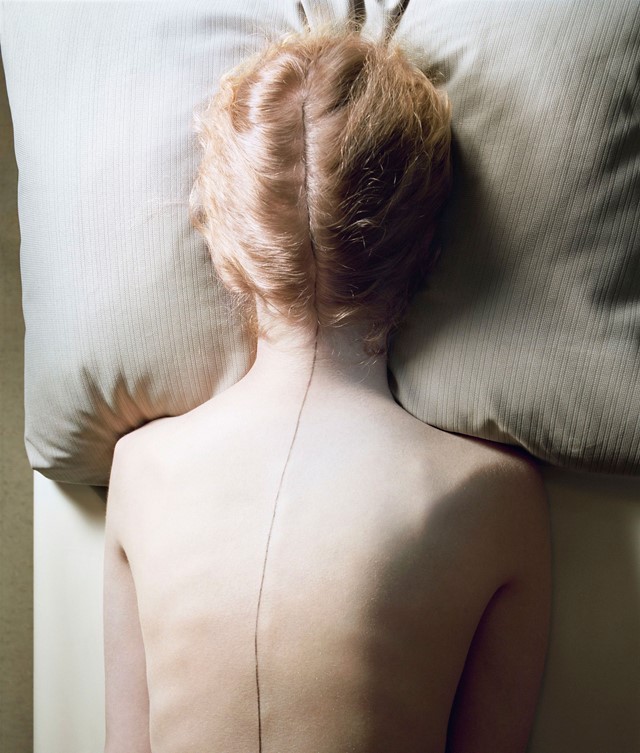
8. Jo Ann Callis, Untitled (Woman with Black Line), c. 1976
The subjects of Callis’ sensual photographs are always partially concealed. Their cinematic quality reveals a world in which the female body seems eerie and mysterious yet erotic. Of the six works on display in this show, Woman with Black Line is the most difficult to decode. We are presented with a female figure laying face down on the bed, her hair gently pulled up to reveal a perfect line tracing her spine. One cannot be sure if she is real, or perhaps some life-sized doll. The tranquillity is equally unnerving; does this image represent death, or peaceful slumber? It is up to the viewer to decide.
Dreamers Awake runs from June 28 until September 17, 2017, at the White Cube, London.
